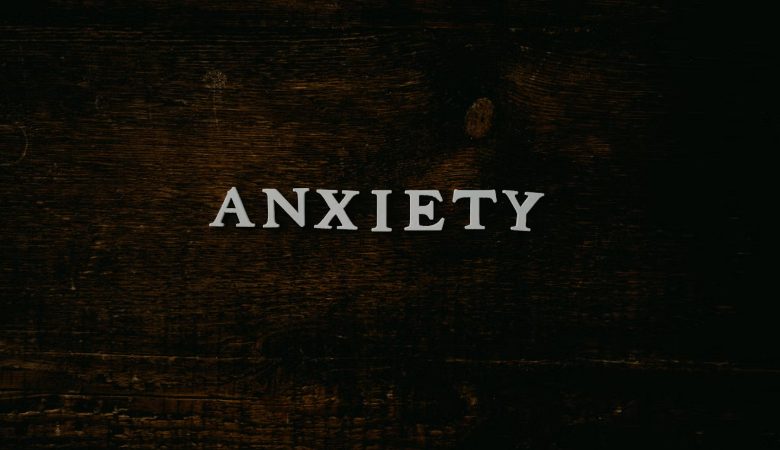
@ShahidNShah


Living with anxiety can feel overwhelming, especially when typical treatments don’t provide enough relief. As people search for alternatives, many ask “does TMS work for anxiety?”
This guide explains what someone should know about transcranial magnetic stimulation as a treatment option for anxiety. The treatment offers hope for many who struggle with persistent anxiety symptoms that haven’t responded well to traditional approaches.
Anxiety shows up differently for everyone. Some people can’t sleep, while others struggle to get through social situations or daily tasks. When medication and therapy aren’t enough, people often look for other options.
Medical centers increasingly report positive outcomes with tms for anxiety, leading more people to explore this treatment path.
This leads to questions about whether does TMS therapy work for anxiety and what kind of results to expect. The treatment works by targeting specific areas of the brain that influence anxiety levels.
The question of how does TMS work for anxiety has a straightforward answer. The treatment uses magnetic pulses to affect specific parts of the brain involved with anxiety. Think of it like a gentle reset button for overactive brain areas.
During treatment, people sit in a comfortable chair while the machine delivers these pulses. Many read a book or just relax during their session. The magnetic pulses help calm overactive brain regions that contribute to anxiety symptoms.
The medical team carefully maps out the exact spots to target. They measure and mark these locations to ensure consistent treatment. The magnetic pulses feel like light tapping on the head. Most people get used to the sensation quickly. The treatment doesn’t require any sedation or recovery time.
The first visit takes longer than the rest. Medical staff figure out the right spot to place the treatment device and determine the strength of the magnetic pulses. They take careful measurements to make sure future treatments hit the right spot every time. This mapping process helps create a personalized treatment plan.
The team explains what to expect during sessions. They answer questions about the treatment process. They also talk about ways to make each session more comfortable. This might include bringing music to listen to or adjusting the treatment chair position.
After the first visit, daily treatments become routine. Most people come in for about half an hour each day. The sensation feels like light tapping on the head. Some notice changes within a few weeks, while others take longer to feel different. Each session builds on the previous ones.
The medical team checks in regularly about any changes or concerns. They can adjust the treatment if needed. Many people find the sessions become easier as they get used to the routine. Some even look forward to the quiet time during treatment.
The body often shows the first signs that treatment works. Sleep might improve first. Then people often notice their shoulders feel less tense. Headaches might happen less often. Some find they have more energy to get through the day. Physical symptoms of anxiety, like stomach problems or muscle tension, might decrease.
These changes often start subtle and build over time. Someone might realize they’re sleeping through the night more often. Or they might notice their hands don’t shake as much during stressful situations. The physical improvements can help break the cycle of anxiety symptoms feeding into each other.
Mental changes usually come on slowly. Worrying might not feel as intense. Focusing on work or conversations might get easier. Small problems might not seem as overwhelming. Many people say they handle stress better than before. Racing thoughts might slow down enough to think more clearly.
The way someone thinks about situations might change too. Things that used to cause intense anxiety might feel more manageable. Social situations might feel less threatening. Work presentations or meetings might not trigger as much worry.
Most people keep seeing their therapist during TMS treatment. The two treatments often help each other work better. Therapists notice changes in their patients and can adjust their approach accordingly. The combination can lead to better results than either treatment alone.
Therapy provides tools for managing anxiety, while TMS helps reduce the intensity of symptoms. This combination helps many people make lasting improvements. The therapist can also help track changes and adjust coping strategies as needed.
Taking anxiety medication during TMS treatment usually works fine. The medical team watches how everything works together. Some people eventually need less medication, but only make changes when doctors say it’s okay. Any medication changes happen slowly and carefully.
The medical team coordinates with other healthcare providers about medication management. This helps ensure all treatments work together safely. Some people find they respond better to medications after starting TMS.
At first, someone might notice:
Over several weeks, changes might include:
TMS fits into most people’s lives without too much trouble. Driving right after treatment is usually fine. Most return to work the same day. Regular activities continue as normal. The sessions can fit around work schedules, and many treatment centers offer early morning or evening appointments.
The treatment room provides a quiet, peaceful environment. Many people use this time to relax or practice meditation. Others catch up on reading or listen to podcasts. The medical team helps make the experience comfortable and productive.
Getting good results often depends on showing up regularly for treatment. Telling the medical team about any problems helps too. Keeping up with other helpful treatments makes a difference. A positive attitude helps, but it’s normal to have questions or concerns along the way.
Good self-care during treatment supports better results. This includes getting enough sleep, eating regular meals, and staying hydrated. Light exercise often helps too. The medical team can suggest other ways to support the treatment process.
Some people benefit from occasional extra treatments later on. The medical team helps decide if this would help. They look for signs that more treatment might help. They also suggest ways to keep anxiety from coming back. Creating a long-term plan helps maintain improvements.
Regular check-ins help track progress over time. The medical team might suggest adjustments to the treatment plan. They can also help connect people with other helpful resources or support services.
Staying better often means keeping up with mental health appointments. Learning to handle stress helps too. Having people to talk to makes a difference. So does knowing what to do if anxiety starts getting worse. Building a toolkit of coping strategies supports long-term success.
The skills learned during treatment continue to help long afterward. Many people find they get better at recognizing early signs of increasing anxiety. This makes it easier to take action before symptoms become severe.
The answer to “does TMS work for anxiety” varies from person to person. Many find it helps, especially along with other treatments like therapy and good self-care. Success comes from working closely with healthcare providers to create the right treatment approach. While not a quick fix, TMS gives many people a new way to handle their anxiety. The treatment offers hope for those who haven’t found enough relief through traditional methods alone

Telehealth has grown in popularity as a way to communicate with doctors. Rather than discussing your current health situation in person, you can log onto a computer or your phone and talk to your …
Posted Mar 30, 2025 Affordable Care Act Medicare Part C Medicare Parts A & B Telemedicine
Connecting innovation decision makers to authoritative information, institutions, people and insights.
Medigy accurately delivers healthcare and technology information, news and insight from around the world.
Medigy surfaces the world's best crowdsourced health tech offerings with social interactions and peer reviews.
© 2025 Netspective Foundation, Inc. All Rights Reserved.
Built on Apr 3, 2025 at 7:03am